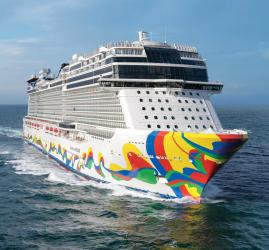 Last Thursday, the Center for Disease Control (CDC) extended its “No Sail Order” for cruise ships calling on the United States. The CDC announced that “this Order shall continue in operation until the earliest of three situations. First, the expiration of the Secretary of Health and Human Services’ declaration that COVID-19 constitutes a public health emergency. Second, the CDC Director rescinds or modifies the order based on specific public health or other considerations. Or third, 100 days from the date of publication in the Federal Register.”
Last Thursday, the Center for Disease Control (CDC) extended its “No Sail Order” for cruise ships calling on the United States. The CDC announced that “this Order shall continue in operation until the earliest of three situations. First, the expiration of the Secretary of Health and Human Services’ declaration that COVID-19 constitutes a public health emergency. Second, the CDC Director rescinds or modifies the order based on specific public health or other considerations. Or third, 100 days from the date of publication in the Federal Register.”
The CDC noted that there are around 100 cruise ships still at sea off the East Coast, West Coast, and Gulf Coast, with nearly 80,000 crew onboard. There are also 20 cruise ships at port or anchorage in the United States with known or suspected COVID-19 infection among the crew who remain on board.
Previously, four of the cruise lines belonging to Carnival Corp, the world’s largest cruise operator, said that they would suspend all voyages by a month to May. Rival Royal Caribbean Cruises Ltd, the second-largest cruise line, said it planned to return to service by May 12. The extension of the “No Sail Order” puts these plans in doubt.
The CDC also revised its rules for passengers and crew who arrive in the U.S. by cruise ship. Passengers and crew ill no longer be able to board commercial airline flights. Instead, the cruise line will have to arrange charter flights. This applies to all passengers and crew on board, including those who are not showing symptoms at the time of disembarkation. If passengers or crew are sick, the CDC said cruise lines are similarly “responsible for transporting all ill or infected patients, including those who need hospitalization.”
